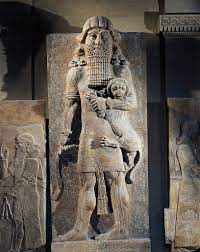Tradere
humanum est
I think that we must consider that others sources for Biblical end Evangelical sourcesnecessary to undestand origin of some episodes as Great Foolt, that just isaccepted by Biblical archeology to a legend from 700 b.Ch. that George Smith has decoded and after he has decode also Epopee of Gilgames, that tolds around an heros from Uruk, a city on Mesopotamia. Also here are some episode that is very interesting for origin of some told. First I think that we can consider that Saturday of jew it is possible that when eros, Gilgames rests after fatigue I think that it become rest in Biblical narration. This book told about city of Uruk and construction of that walls and other could be origin of Genesis and creation of word. Goliath could be from Gilgames because a descriprtion shows some particular, he is very high, and he is very brave and he is very strong, the hight is impressive then, because he was 6 cubits almost three meters,and he wolked through mounts, and could be origin to opening of red sea, and he dug well in stone cliff, it could be origin to water from stone. The same creation of man could be from this Epopee, because during tell a god has drawn a figure of man and other god has shaped with clay a man. Evangelical tell is equal, because shepherds go to fold of Gilgames and the gifts of three kings that has brought gold, incense and myrrh in Evangelical episode in Epopee become bread and liquor, and also some king is kneeling in front of Gilgamesh. I think that is could be origin of these episodes, becasue these legends were very spread and geography aids this hypothesis becasuse this Epopee is from19th century before Christ, and it is, may, the oldest written document of human kind, and Uruk was a city from 230 kilometres from Bagdad, then merkants and others travellers could tall thse histories.
Alessandro Lusana






.jpg)



.jpg)
